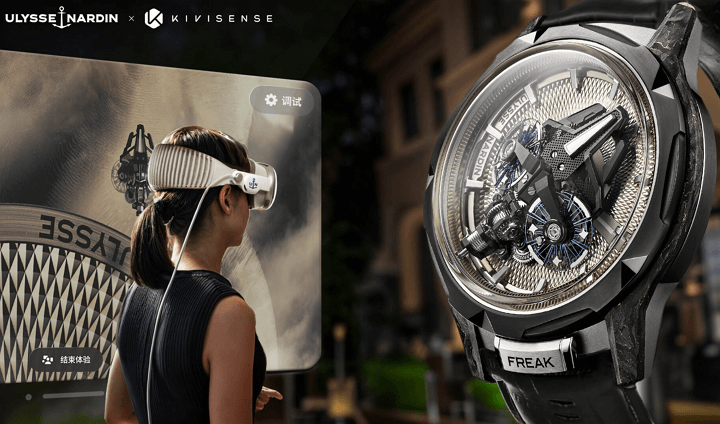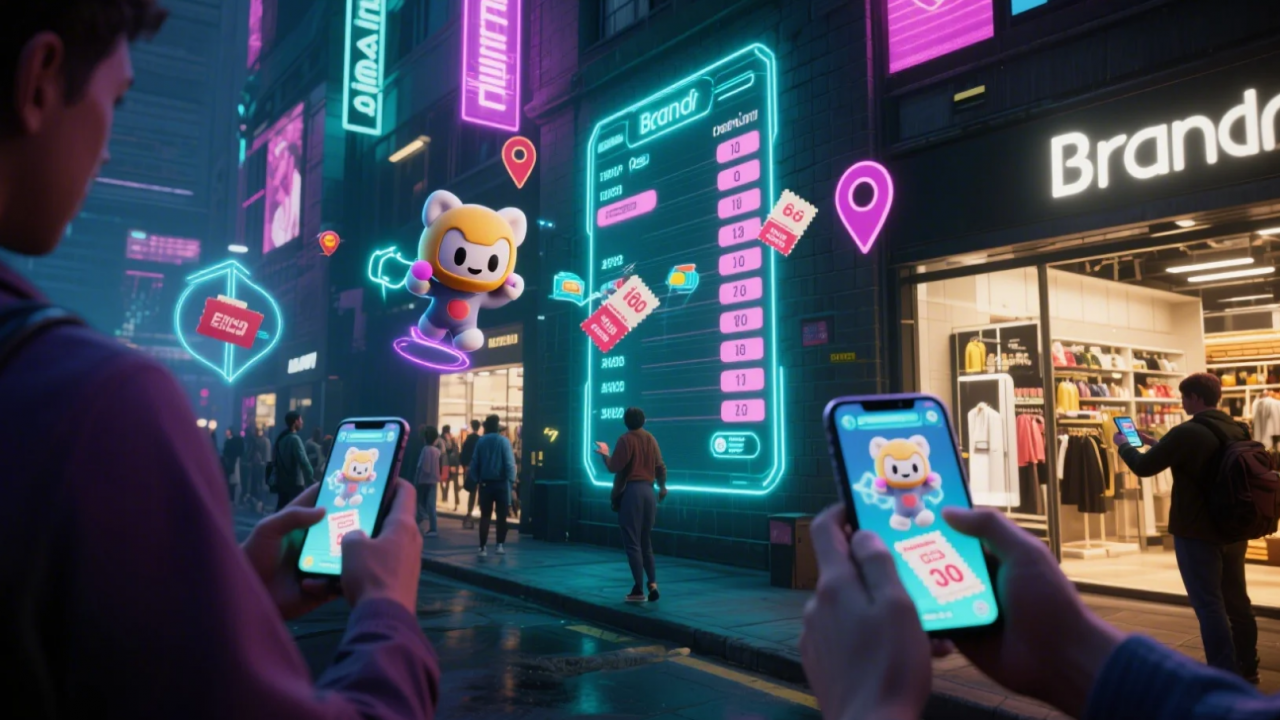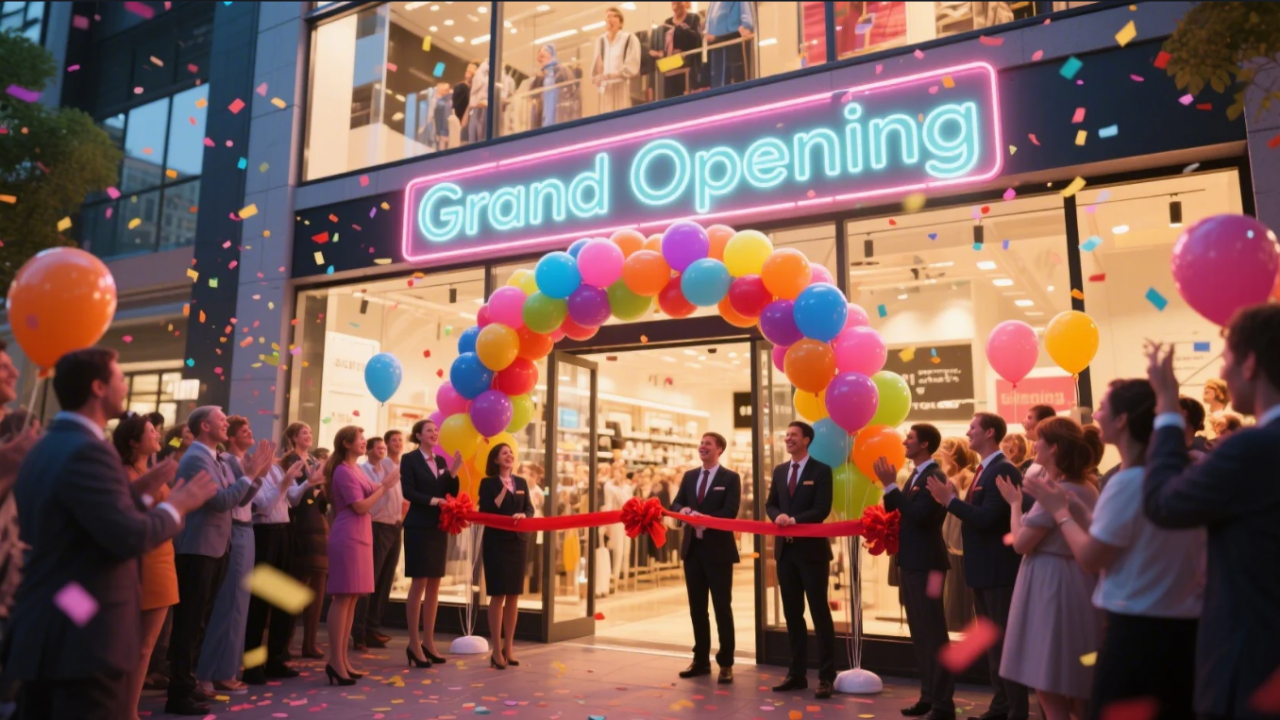What does phygital mean?
The word Phygital, as appears from its name, is the fusion of physical and digital worlds. It combines the best of in-store and digital shopping to create shopping experiences like never before. The main idea behind phygital is to create seamless interaction between physical touch points and digital technologies. Phygital in retail has become an inevitable thing at this point as Gen-Z customers love dynamic interactions. Their demand for immersion and something new is driving more and more innovations in phygital retailing. This shows phygital is not only here to stay but will also redefine the future of retail marketing.What is Phygital in retail and why is it on the rise?

Source: Commercetools
Phygital retail is booming because that’s what today’s customers demand. They want convenient and individualized experiences from brands to make their shopping experience full of immersion and interaction. This is what drives the need for phygital retail strategies and tools. Phygital marketing bridges the gap between brands’ physical and digital presence. Therefore, having an effective phygital retail strategy is utmost necessary to win in the new retail landscape.
Technologies and trends shaping the future of phygital retail
VR games
Virtual reality makes the shopping experience more immersive with virtual gaming experiences. Customers can virtually explore 3D showrooms and stores and interact with digital elements in gamified retail spaces.
YSL Beauty Zone VR Pop-Up
YSL Beauty created an immersive space called “YSL Beauty Zone VR Pop-Up” at Sanya Mall in collaboration with China Duty Free Group. By wearing an Oculus VR headset, people can check out YSL’s three pillar beauty products, including a lipstick, perfume, and a night reboot serum. The gamified exploration gives users an intuitive controller to examine their offerings in a virtual yet ultra-realistic 360° beauty zone.
Ulysse Nardin X Apple Vision Pro
Ulysse Nardin showcased its Freak watches using Apple’s Vision Pro technology in an impromptu night of fashion, technology, and performance. The event was hosted by Ellemen, a top Chinese platform for men’s lifestyle, at the iconic Sun Ke Villa in Shanghai. By wearing Apple’s Vision Pro headset, attendees were able to discover the fine detailing and characteristics of exquisite watches. The event was a big success and earned high attendance and engagement within a short time.
MR Product display with Apple Vision Pro

MR stands for virtual interactive commerce mixed reality. Combining it with Apple Vision Pro to display products creates a fusion of virtual and augmented reality. The immersive exploration lets users really get up close and personal with products before buying them. They can pop on the Vision Pro headsets to see products with every tiny detail in a highly immersive environment. This shows how next-gen Metaverse techs can impact e-commerce and retail experiences for the better.
Virtual showrooms or fitting rooms
Virtual fitting rooms are becoming the new norm where users can visit the stores and try on any products virtually. These digitally created experiences let users get a detailed and accurate preview of products and see how they will fit and look in real-world scenarios.
Canada Goose
Canada Goose, in a collaboration with designer Feng Chen Wang, has unveiled a virtual showroom to launch its newest winter clothing collection. Customers can visit the digital showroom and see real and virtual designs created by the designer. They can try on jackets and other clothing items with high-quality and realistic displays through phygital exploration.
Interactive displays and mirrors
Installing AR technology displays and mirrors in stores can boost store profits. AR-powered mirrors superimpose realistic displays of products on a person’s reflection in the mirror, which increases their confidence in the purchase.
Hearts On Fire’s AR mirrors
The iconic American diamond brand, Hearts on Fire, launched a unique jewelry try-on with AR magic mirrors. Customers can get the experience at pop-up events or through the WeChat Mini Program and try their favorite HOF jewelry pieces with much less hassle.
Mobile as the central phygital hub
Mobile phones have become a major phygital touchpoint for retail stores. Having AR-powered apps on your mobile makes your shopping smooth with instant product details, individualized offers, location-based notifications, and hassle-free checkout features.
Huawei’s “Ten Days Later” AR experience
Huawei’s incredible AR experience at the “Ten Days Later” Future Home in Shanghai exemplifies technological impact on home design and living. Users will open the Future Home AR mini-program and point it at Huawei’s Smart Home authorized store. This will unveil a series of futuristic AR effects with just a tap and make the home design process more immersive and digitized.
Smart stores
Smart stores are integrated with innovative tools like IoT devices, sensors, and smart shelves. These in-store enhancements make buyers feel like the store is set up just for them. They use AI models and algorithms to analyze your behavior from actions and then provide a specific experience created for your needs and interests.

Self-checkout kiosks
Self-checkout or cashier-less counters make your payment process simple and quick. Buyers can skip the long waiting part and get their clearance and payment done in a matter of seconds. Luxury brands like Zara use self-checkout kiosks, where users can make payments and leave the store without wasting any time.
Real-world examples of phygital retail success
Livat Shanghai’s Grand Opening
The grand opening event of Ingka’s Livat Shanghai was full of extraordinary and immersive experiences. The highlight of the big launch event was the Innovation Hub. Scanning it with mobile phone cameras takes people to the AR fantasy world of Livat Planet.
Here, they can enter four fun-filled interactive zones, named the Planet Forest, Planet Ocean, Planet Wildflower, and Planet Wonderland. The exciting launch event successfully combined next-level tech with art and sustainability.
Conversational AI NFC screens of Livat
Livat Shanghai has installed interactive AI-powered NFC screens to offer a seamless navigation to visitors. Using these smart screens, users can converse with Livat AI and get real-time updates about the events and brands in the mall. Plus, they can scan any item in front of the screen to get all the details about it and locate stores and restaurants easily. This makes the user experience more digitized, personalized, and immersive.
Jordan AR experience
Nike’s Jordan Brand created an immersive spatial AR experience at its first ‘’World of Flight’’ store in China. Users are guided by a precise AR to the store’s forefront, where they witness a mind-blowing spectacle. By scanning the building with mobile cameras, they discover an AR cockpit, where basketballs drop and create a show of AJ1s and shoeboxes flying in the air. Cool AR filters add to their fun and let them snap fun selfies by donning Jordan hoodies digitally. This cutting-edge technological approach mixes creativity and cultural offerings of the Jordan brand subtly.
Pomellato AR try-on mirror
Pomellato’s has stepped up its digital marketing game with jewelry try-ons using AR-powered mirrors. Customers can select any neckpiece or ring to get precise information than a basic image. high-performance 3D rendering technology highly restores the shine of jewelry items. Plus, customers can also experience real-time try-on effects with precise AR body tracking and AI finger circumference measurement. These tech-driven enhancements make jewelry shopping more fun.
Benefits of phygital retail in marketing
Immersive in-store experiences
Phygital interactions make in-store explorations more immersive and engaging. Users can witness cutting-edge advancements and innovations firsthand, which makes their visit an unforgettable one.
Personalized recommendations
Use of AI tools, instilled with immersive tools like AR-mirrors, helps brands offer personalized suggestions to customers. This makes them feel that the brand values them and connects them on a personal level.
Competitive edge over others
Using phygital retailing techniques for marketing motivates brands to be creative and develop experiences that no one has ever imagined. This gives the brand an edge over others and boosts its recognition.
Better customer reach
When something new is offered, everyone tends to experience it first and share it with others. And that’s how phygital retail experiences widen the reach and audience of brands.
Seamless customer journey
Use of digital navigation systems and immersive explorations in stores makes customer’s retail journey smooth, digitized, and less of a hassle.
How to create effective phygital retail marketing campaigns with Kivisense?
Phygital retail is already in, and we are increasingly experiencing its demonstrations around us. This tells us that the retail sector is going to be fully ‘’phygital’’ in the near future. If you want to step into the world of phygital retail and level up your brand’s market and digital presence, come have a talk with us. Kivisense is a Sino-French joint venture, and we offer self-developed digital solutions for marketing and retail using advanced AR, VR, and AI tools. Get in touch with us to take your first step towards phygital retailing.






